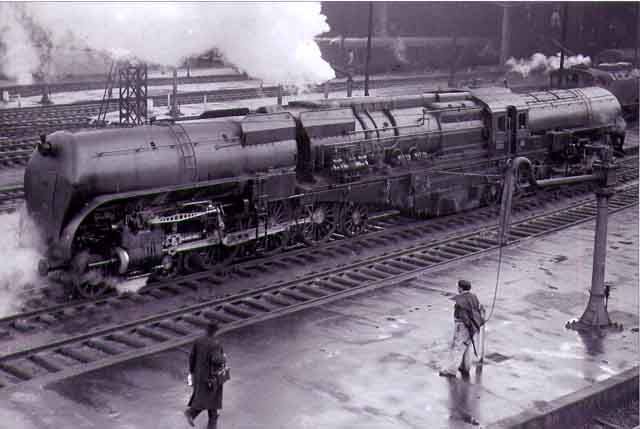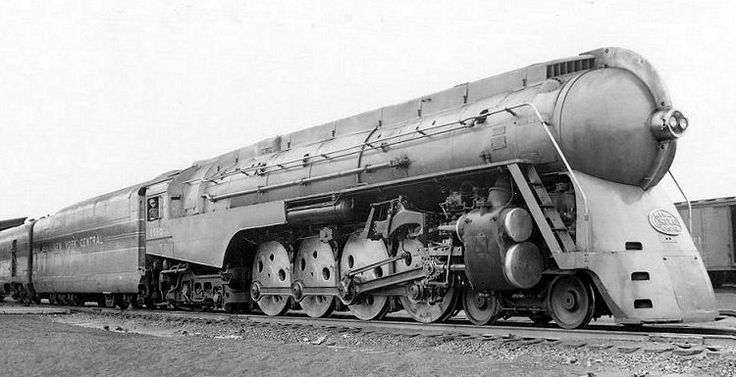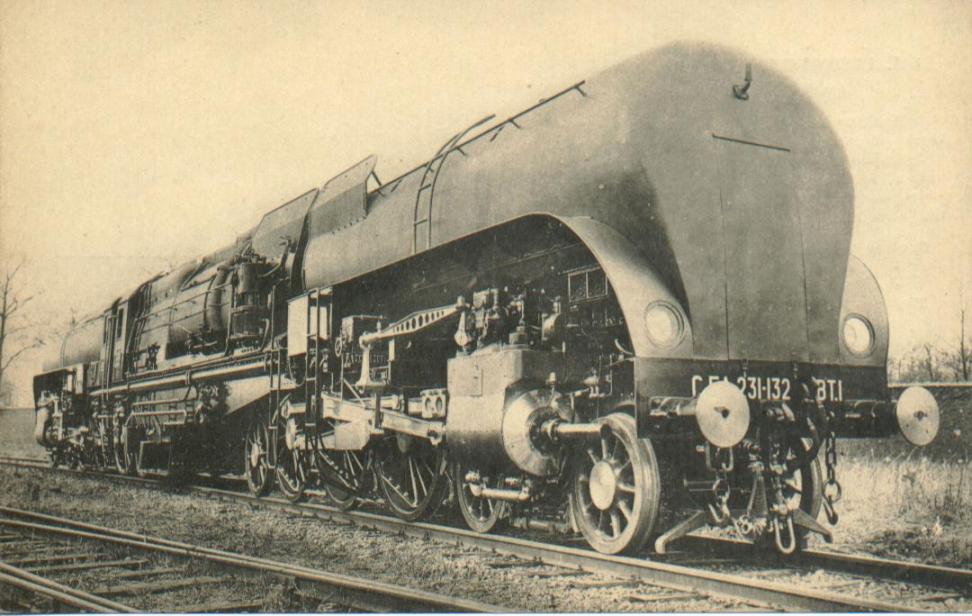September 2018
Please have a look at this rather curious machine. It is a member of the well-known Beyer-Garratt family. Yet for a change it was not built in the UK but in France, for service in Algeria. Obviously, Africa was the stomping ground for the mightiest of the Beyer-Garratt’s and in that respect this machine is clearly right at home there. However, the machine wasn’t designed to be a powerful slogger with heavy freight trains, but a 120 km/u (75 mph) express locomotive in mountainous landscape. The book that describes them best is John R. Day’s Railways of Northern Africa. As it was published in 1964 by Ebenezer, Baylis & Son in London, it is unlikely you’ll find it anywhere else but in charity and second hand bookshops, as indeed that is where my copy was found.
The machine was a pre-war trial to have the power of a type of “double locomotive” on the Oran-Algiers section of the line through the Atlas mountains. Sections of this line have 1 in 38 gradients with sharp uncompensated curves and it crosses the Atlas plateau at well over 3,000 ft – 1 km, the summit at Setif being at 3,570 ft – 1,100 metres height from sea level. Therefore the choice for an easy-curving double Pacific (4-6-2/2-6-4 or 2’C1’/1’C2′) Beyer-Garratt for the heavy passenger trains on this line was eminently justified. The machine was built by a French Beyer-Peacock associate, the well known Societe Franco-Belge at Raismes in Northern France.The locomotive had no peer in its family as far as speed was concerned: Tasmanian Railways had run a Beyer-Garratt at 55 mph – 88 km/h on its 3 ft 6 inch – 1067 mm Cape gauge route in 1912 and South African Railways were known to flog their Garratt’s up to similar speeds if the need was there, but such machines to be used at scheduled 75 mph – 120 km/h duties was rather novel. Following the prototype trials in France between Paris and Calais -crossing the Caffiers hill- in 1937 29 further machines were ordered and built between 1936 and early 1941. The power of these machines with xx cylindres and their Cossart valve-motion gear may be judged from the fact that with a 803 tonnes passenger train at the drawhook the machines reached 60 mph – 100 km/h within 5 miles-8 km from a standing start. The fastest top speed recorded was 81 mph – 132 km/h, surely a record for an articulated steam locomotive. Whilst the machines were actually conceived as assisting machines on the most difficult section of the Algiers to Oran line, in fact they found themselves being used as the high-speed train engines all the way from Oran to Constantine, even if Oran to Algiers and back was their usual employment.
What did these powerhouses in was the bad quality of the water with which they had to work as well as the lack of boiler maintenance and the serious damage that was inflicted during the war. By the end of the war their boilers were practically worn out and the obvious and economically most attractive solution to the problems was electrification. Messrs Alsthom were happy to supply the traction for the 3 kV dc lines and the unique Garratt’s were rather quickly scrapped from 1951 in the post-WWII world of renewal and rebuilding, never mind the Algerian independence. In a way it once again is proven, however, that in pre-WWII days European nations were far more adventurous with railways in their colonies than they were at home.
And to finish, something that came as a complete surprise when searching the internet: a New York Central “Niagara” 2’D2′ (4-8-4) dressed up by Henry Dreyfuss in full 20th Century Limited regalia, complete with non-standard Scullin disc driving wheels. Strange that the massive Pt14 tender wasn’t used but the standard 12 wheel version that the J3a “Hudsons” used. Given that a few bits parts of the full streamline shroud have been removed already (or were perhaps never fitted going by mounting experience with the Hudsons) I would think this is a post-war picture. But what a machine; definitely looks better that the Hudsons.


